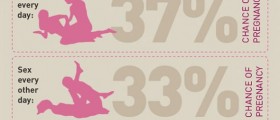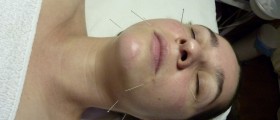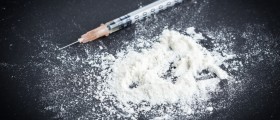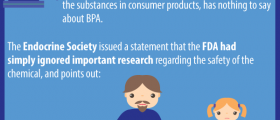Female Puberty
Although it is widely believed that the start of the menstruation is the beginning of the puberty in females, it actually begins much earlier. There is no specific age when the puberty starts since it depends on many factors, such as genetics, environment and ethnicity, as well as nutrition and other social factors. Therefore, the actual female puberty age is not the same for every girl. However, it is considered that the average age at which puberty begins in females is between eight and fourteen years.

In females, the puberty begins once the pituitary gland starts to produce the hormone FSH, which has the role to stimulate the ovaries to secrete the hormone estrogen. This hormone along with progesterone is the most important hormone in the female body, since it regulates the development of female sex characteristics and development of the sex organs. In the beginning of the puberty, the changes usually happen within the body. Over time, the changes become visible externally also.
- Coarser hair will begin to grow in the genital area, under the arms, and on the legs. In some girls (about 15%), pubic hair may be the first sign of puberty?showing up before breast budding starts.
- Around the time they reach middle school, many girls begin to show interest in shaving their legs and armpits. This is a personal choice; there is no medical reason to shave armpit or leg hair. Before giving them a razor, show them how to use it properly and avoid skin irritation and cuts, which can become infected.
- Some girls experience a small to moderate amount of clear or white vaginal discharge that starts about 6-12 months before their first period. This is a normal response to growing amounts of the hormone estrogen in the body.
- While timelines can vary, most girls get their first period within 2 – 3 years after the development of breast buds. The average age for girls to get their first period in the United States is around age 12. It's important to emphasize that periods are a normal part of growing up. Young girls should know that it's okay to talk about periods and ask questions about them. Some young people may have anxiety about how to handle their first period, given that it can happen unexpectedly. Providing supplies (pads, tampons, and pantiliners) for your child's locker or backpack and reviewing resources at school, including the school nurse, can help alleviate this worry.
- Most girls have their growth spurt at a younger age than boys do. The fastest rate of height growth usually occurs in girls between when breast buds start to develop and about 6 months before they get their period. Once a girl has had her first period, her growth has already started to slow down. Most girls grow another 1-2 inches after getting their period, but increased height beyond that is less common.
- Many young people develop acne during puberty. This can be related to changes in hormone levels during this time. Sweating under the armpits and increased body odor are also normal changes?and why most girls begin using deodorants and/or antiperspirants at the start of puberty. With more oil and sweat being made by the skin, girls this age may start wanting to shower or shampoo their hair more often.
- On occasion, girls start puberty either very early or very late. Contact your pediatrician if you begin to see pubertal changes before your daughter is age 8. Likewise, contact your pediatrician if there are no pubertal changes in your daughter by age 13.
Stages of Female Puberty
There are five stages in female puberty.
The first stage in the female puberty begins at the age of 8 or 9 and finishes when a girl reaches 12 or 13 years. In the beginning, the changes are internal and at 11 or 12 years, the breasts start to develop. Since the breasts are not fully developed, they are called breast buds. The areolas around the nipples become darker and pubic hair starts to grow in this stage. The girls also start to gain in weight and height in this phase of puberty.When the girls turn 12 or 13 years of age, the second stage of the female puberty begins. The main symptom of this stage is the thicker growth of pubic hair. The hair starts to appear in the armpits and the arms and legs are covered with darker and ticker hair. The vagina increases also in this stage.
The third stage of the female puberty is when the girls reach 13 or 14 years of age and when the first menstruation occurs. In this stage, ovulation may start although it takes time to become regular.
In the fourth stage of the female puberty, the nipples and the areolas begin to protrude, while the hair everywhere becomes dense. The hair now starts to grow in the inner thighs.
The fifth stage of the female puberty is between 15 and 17 years of age. In this stage, the female body is fully mature. In this period, the height of girls becomes stagnant, the breasts are formed and the menstruation and ovulation become regular. In this stage, the girls usually have to cope with acne, which occurs due to the hormones estrogen and progesterone.















-In-Adults_f_280x120.jpg)

Your thoughts on this
Loading...